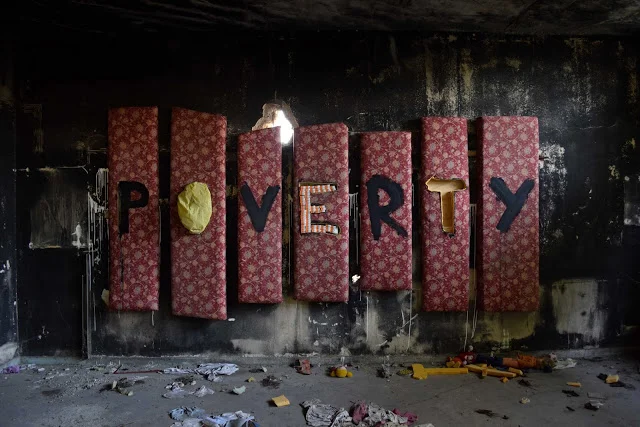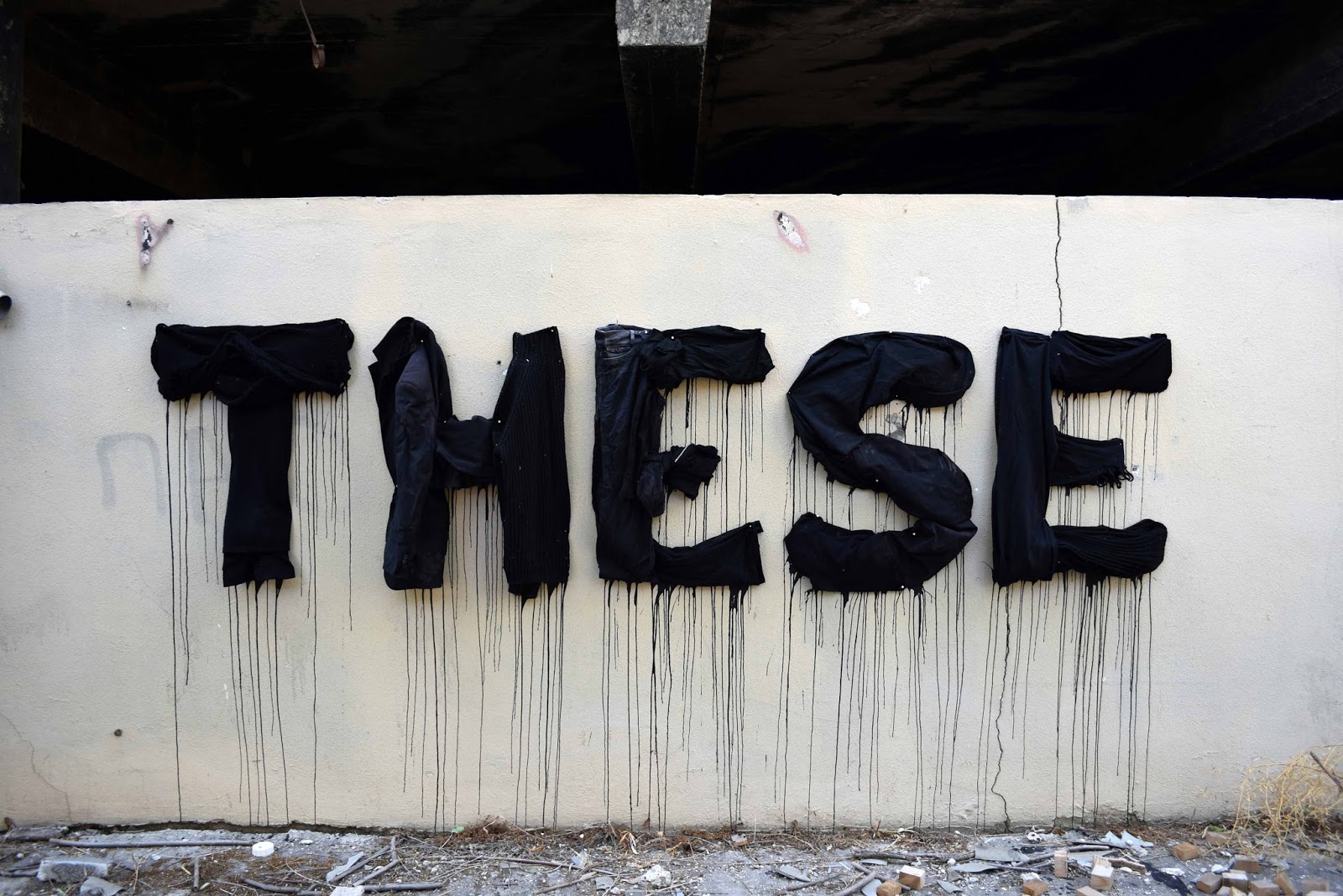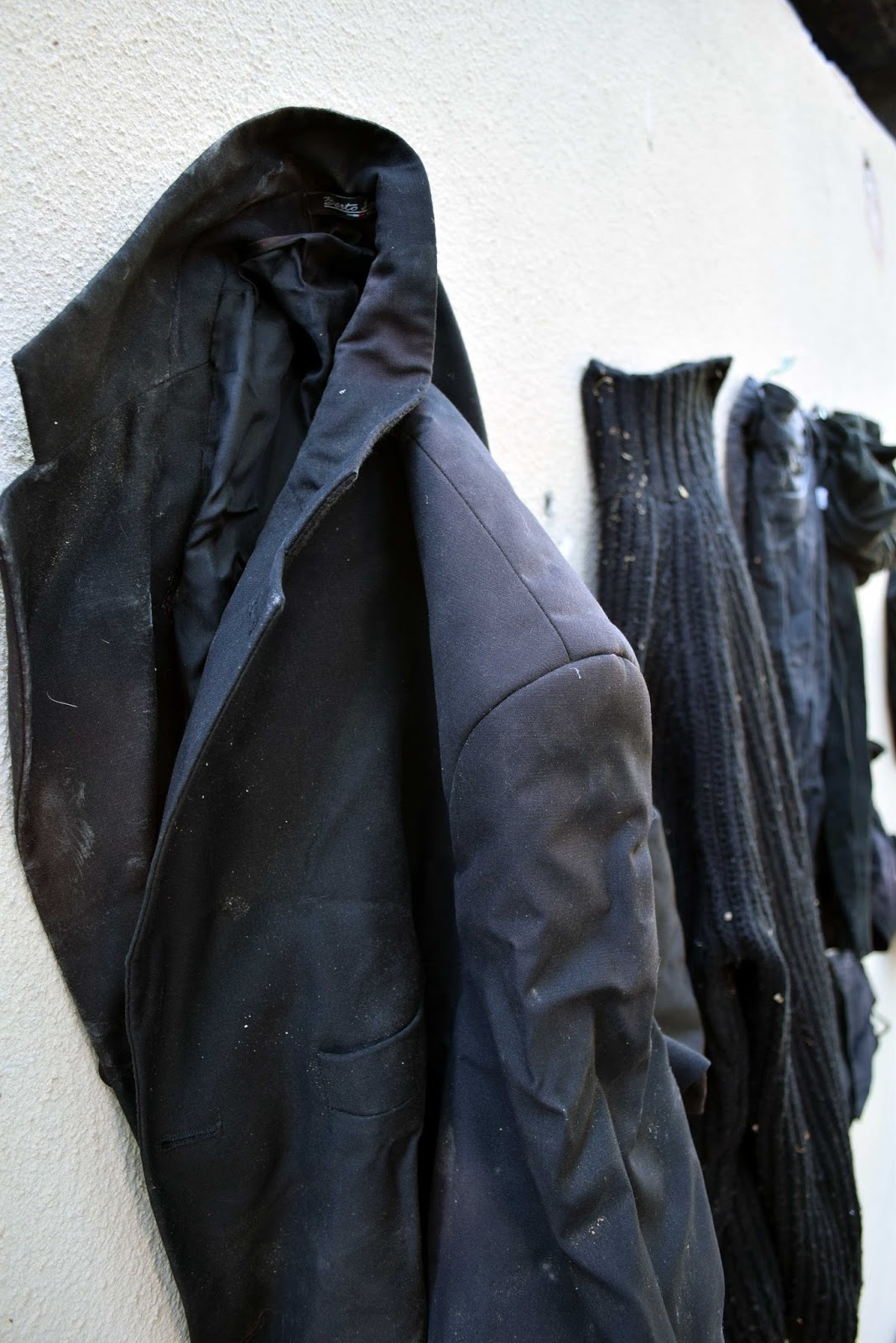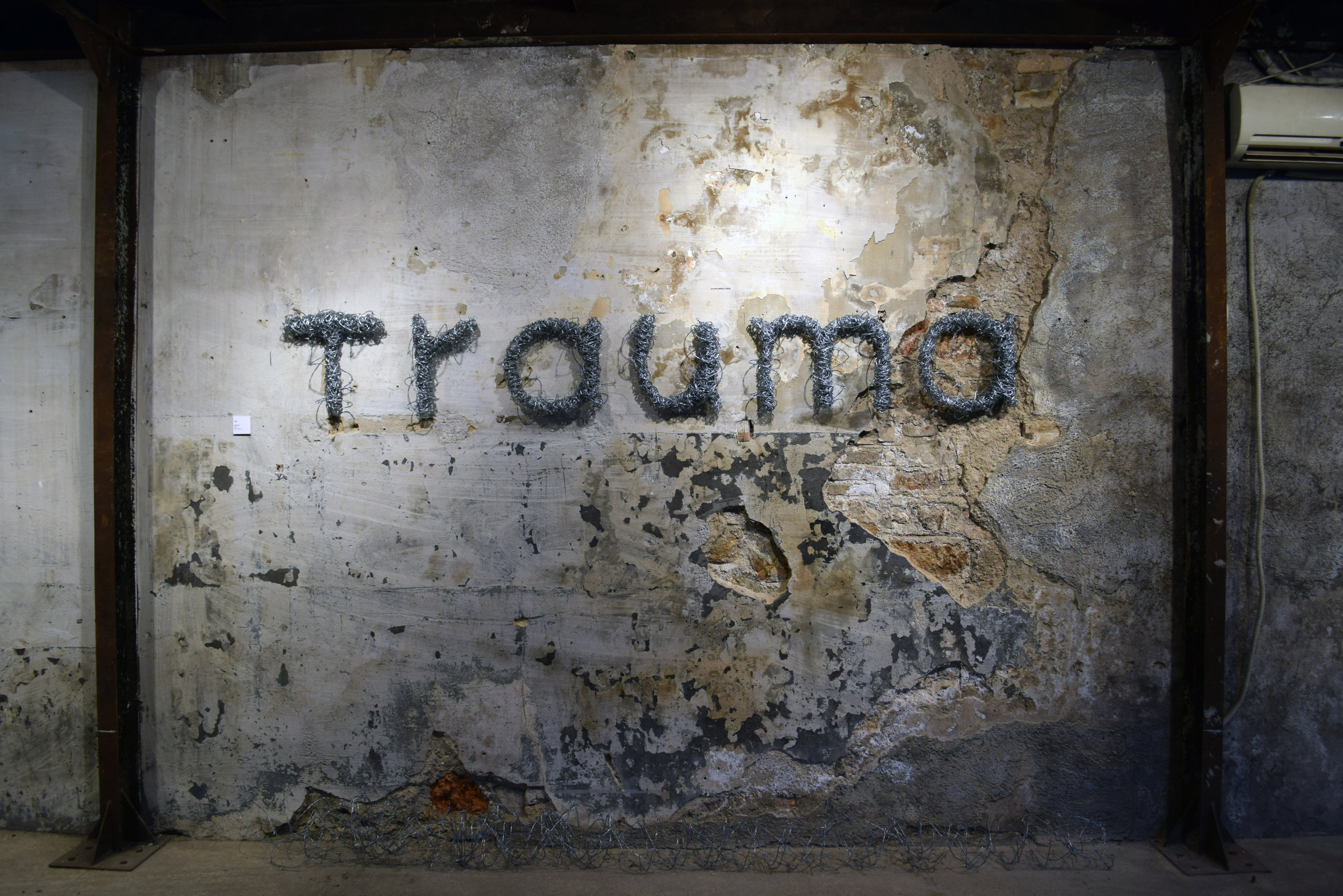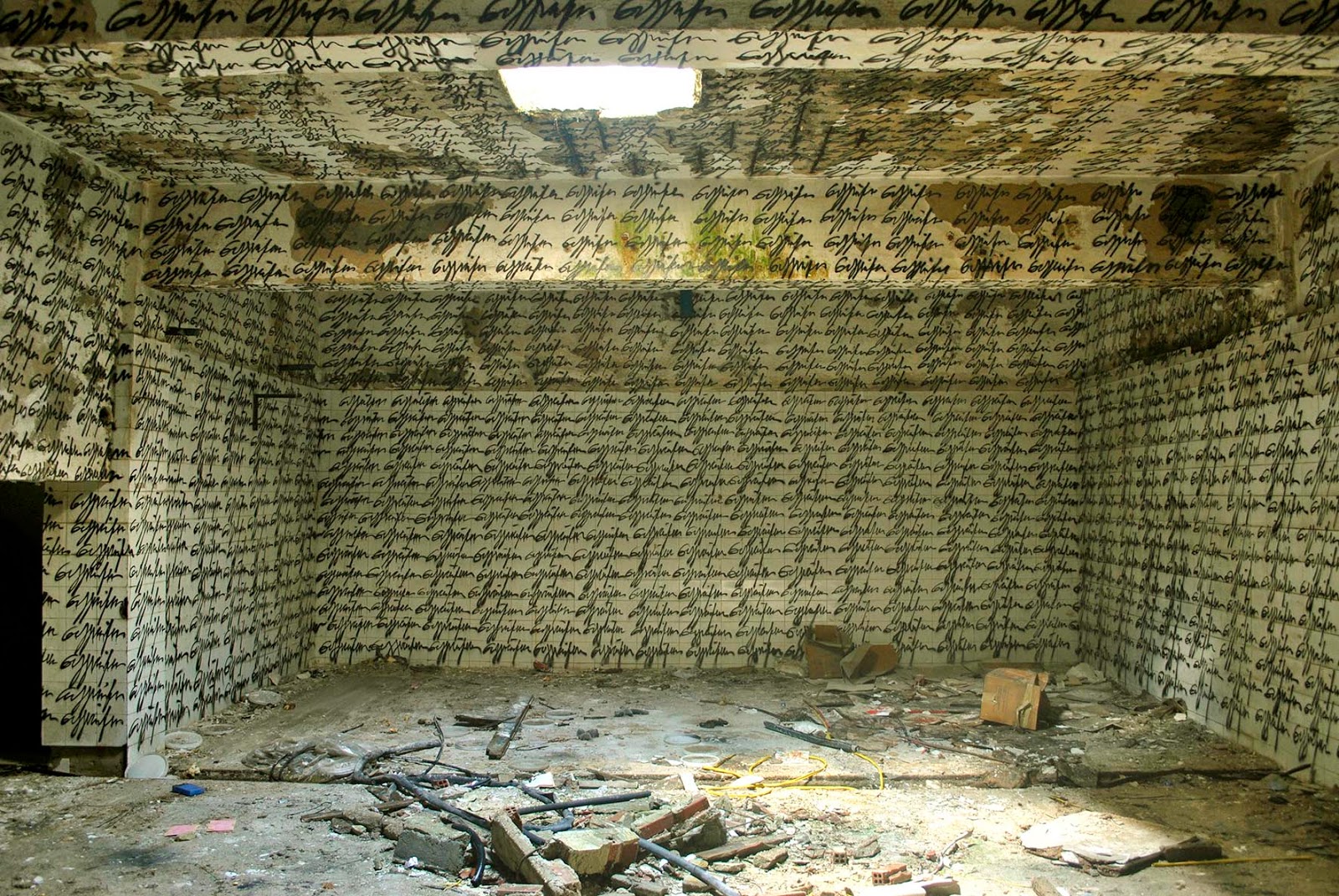In Forgotten Places - Sculpture Magazine, March 2017
"On the edges of the Greek urban landscape, in neglected and abandoned buildings, Iakovos Volkov composes eloquent, cerebral sculptures. His site-specific works are made of discarded materials that he finds and reimagines. Meaning is given to spaces that have lost relevance, environments scarred by a lacerated economy. Interiors of empty crumbling factories are where Volkov leaves a mark, a gesture of respect to places that were once vital.
Most of Volkov’s art has been created in two of the largest cities in Greece, Athens and Thessaloniki. Both are complex engaging architectural settings where buildings reference legacy. Ancient classical structures coexist with the modern and contemporary in these provocative cityscapes. There is an expressive vitality seen on the streets of Athens and Thessaloniki that energizes the narrative of these domains.
Shaped by his relationship to the urban experience, Volkov has been making art in public settings since he was a young boy. At fourteen he began to write graffiti on the streets of Thessaloniki. Later he incorporated painted images confidently rendered. The city was Volkov’s art school, the place where he found his voice and identity.
Volkov builds sculptures with a visceral urgency, as if for him, to create is to be alive. He has made pieces for art galleries, but abandoned settings offer this artist a more essential experience. Working alone in places that are quiet and forgotten, few people see his actual pieces. He documents the work in photographs, posting them on a blog. At times the photos are printed and shown in art spaces, but these images only give a semblance of the installations.
A heighten sense of the personal drives Volkov to make art. While he wants to connect to an audience, the works echo private journal entries. Like a postulant looking for enlightenment, Volkov searches for places, and considers things found to offer direction. He writes words on walls and reconfigures materials, creating thoughtful details in raw landscapes. This art reflects his roots as a graffiti artist; what he leaves behind is similar to a tag that proclaims his presence and impact on a location.
The power of words is well known to graffiti artists. Writing discovered in unexpected places prompts ideas and emotions. Volkov is grounded in this orientation and exploits the possibilities of language in many of his works. When he was a boy he painted text directly on city walls. Now elevating his approach, he constructs letters that become relief sculptures, increasing the potential of the words he writes.
There is a poetic sensibility to Volkov’s wall-mounted words. His placement and handling of materials transcends conventional graffiti. This artist’s commitment to the possibilities of language as sculpture offers a unique set of opportunities. He literally speaks in his art, giving form to his words.
“THESE” is a work built with discarded black garments. Each piece of clothing carries a history while at the same time forming a part of a letter. Volkov has repurposed these clothes found in a derelict factory into a bold sculpture that is straightforward and yet nuanced, with a latent narrative. Twisting the garments, he shapes letters attached to a white wall. Lines painted directly behind the forms read as if they are bleeding from the cloth, accentuating each letter and its relationship to the wall. This artist handles cloth like a calligrapher uses pen and pencil. The word is given an enhanced significance by the materials used.
The garments are old and worn, yet to Volkov’s sensitive eye, beautiful in their found condition. Seeing beauty and significance in things cast off is core to Volkov’s esthetic. Sharing his thoughts on the subject, he says; “I continue to give life to clothes because people neglected them. They spent so much time together and now no one wants them except me.”
Volkov was thinking about his grandmother when he created “OLD SCHOOL” out of lace. He made this piece after seeing a Facebook page with several DJ’s wearing lace doilies on their heads. Comparing this work with “THESE”, it becomes clear how material choices support concept in Volkov’s writing. By using a textile associated with senior Greek women, “OLD SCHOOL” becomes a gentle work.
This sculpture also exemplifies the importance of site considerations for Volkov. Lace, associated with home and safe environments, skews expectations when attached to a blackened abandoned factory wall. The words seem vulnerable, exposing a state of tension that exists between place and material, creating a complex emotional moment, open to interpretation.
In 2015, the United Nations Refugee Agency in Greece invited Volkov to participate in an exhibition titled, It could be ME – It could be YOU. The event was organized to mark World Refugee Day, which is observed annually on June 20. At first, Volkov did not want to take part in the event because, as he says, “ I felt like a hypocrite to be in something that I have never experienced”. But after reading extensively about the issues confronting refugees today, he changed his mind and conceived the sculpture, “Trauma”.
The work is resolved and clear in its message. Profound trauma is unquestionably one of the effects of a life tragically uprooted. It is a psychological state many refugees will live with long after they have found a safe haven. Writing trauma with barbed wire intensives the power of the word. Using an aggressive razor sharp metal with its countless negative connotations, Volkov imposes upon the barbed wire the task of speaking for the refuges, not working against them.
While the written word drives much of Volkov’s art, he also explores other ideas in his work. The appeal of the discarded is potent for this artist. He is compelled, driven, to save and find relevance in what others cast away. Volkov is drawn to modest materials that had little importance even when they were in use. Thousands of paper cups left in an abandoned factory in a state of mayhem would appear to the average person to be nothing more than worthless trash. Yet Volkov had a different response, feeling the urge to transform this chaos into something consequential.
From this, Volkov built a sculpture into a damaged wall at the crumbling factory. The work is simple in construction, yet conceptually robust. Volkov often fills spaces with things he finds, imposing order and purpose in settings that are broken. The contrast between these spaces and the sculpture created is compelling, challenging expectations. He produces a rarefied environment that offers a distinct aesthetic encounter.
In another factory, Volkov made a work by filling large holes in the building’s floor with groups of folded fabric. The cloth is colorful and soft, framed by a gray concrete. This untitled piece, like others he had done in similar situations, brings a moment of pause that can be experienced when art is found in an unexpected place. It is a piece of unpretentious visual poetry, quiet, yet substantial.
Referencing his activities in abandoned places, Volkov has taken similar concepts into art galleries. In one large installation at the Atopos Contemporary Visual Culture, an Athens arts organization, Volkov stacked cloth into door and window alcoves, architectural elements that delineate the gallery’s space. The work is similar to another piece done in a factory, but takes on a different meaning in this formal place. When inconsequential cloth is conserved and transformed in a conventional art venue, the piece projects permanence, rather than the sense of vulnerability seen in works made in crumbling structures.
Iakovos Volkov moves through the world like a scavenger and a poet. He is an artist who creates for the most intimate reasons, offering sculptures that are humble, yet astute. In his site-specific art, which appears exposed and defenseless, he assigns value to things that have been overlooked or discarded. In his hands, abandoned buildings are transformed into art spaces; materials with no esteem become decisive sculptures and absorbing installations."

